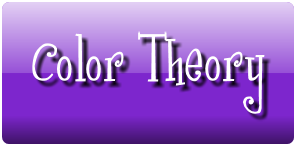
In color theory, we often talk about the color wheel. A color wheel is really just the spectrum twisted around so that the violet and red ends are joined. The color wheel is particularly useful for showing how the colors relate to each other and how you can create new colors by mixing two or more colors. Adding it all together, we get the complete color wheel. The color wheel is the foundation for much of color theory, it is important to remember what it looks like and where the colors are in relation to each other.
How many colors? It is hard to give an exact answer to this question, but in general one can say that the risk of using too many colors is greater than the risk of using too few. Too many colors will make the page feel too busy and it usually makes it harder for the viewer to find the information he or she wants. It is also more tiring to the eyes. A page with too few colors, on the other hand, risks being seen as a bit boring, but this need not always be the case.
One commonly used rule in these matters is to use three colors.
My favorite links regarding color on the web are:
Color Theory - In Review
A color wheel is really just the spectrum twisted around so that the violet and red ends are joined.
The three primary colors of the color wheel are red, yellow, and blue.
The three secondary colors that are created by combining two of the primary colors are purple, green and orange.
The colors on the color wheel that are created by combining primary and secondary colors include red-orange, yellow-orange, yellow-green, blue-green, blue-purple, and red-purple.
Color value is how light the color is. The color values is made of tints and shades.
Tint is the lighter values of a color.
Shade is the darker values of a color.
1) Monochromatic color is a color scheme using only one color and its tints and shades.
2) Split complementary is a color scheme using a color in combination with the two colors directly to the left and right of its complement.
3) Complementary is a color scheme using complementary colors, which are the colors opposite on another on the color wheel.
Monochromatic is a color scheme using one color and its tints and shades.
Complementary color examples are red/green, blue/orange, and yellow/purple.
Analogous color examples are green, blue-green, blue, and blue-purple. The problem with analogous colors is that the contrast does not vary much and the text can get lost in the background.
Warm colors include reds, yellows, and oranges.
Cool colors include blues, greens, and purples, which are my favorite colors.
Color psychology means that colors often have different meanings in various cultures. In America, pink is associated with girls and blue is associated with boys. White may stand for purity and innocence as in a bride wearing a white dress. Red is the color of love.